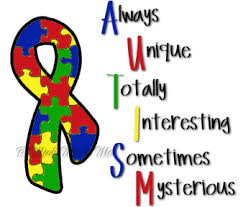
There can be no denying that the amount of children with Autism Spectrum Disorders (ASDs) is on the rise. The Autism Society reports the “prevalence has increased by 6-15 percent each year from 2002 to 2010” ( Autism Society). The National Professional Development Center on Autism Spectrum Disorders (NPDC) states “diagnosing autism as soon as possible gives families some answers they are seeking to their questions about their children’s atypical development. This allows them to begin the process of learning about autism, understanding its effects on their child, and beginning the process of perceiving the future differently. It allows families to replace worry and fantasy with solid information about the nature of their child’s challenges” (Module: Early Identification of Autism Spectrum Disorders). Early diagnosis can help tremendously. As NPCD tells us, “Understanding and recognizing the earliest characteristics of ASD is important to early identification and referral for appropriate services, resources, and supports” (Module: Early Identification of Autism Spectrum Disorders).

The Centers for Disease Control describes ASDs as: “developmental disabilities that cause substantial impairments in social interaction and communication and the presence of unusual behaviors and interests. Many people with ASDs also have unusual ways of learning, paying attention, and reacting to different sensations. The thinking and learning abilities of people with ASDs can vary—from gifted to severely challenged. An ASD begins before the age of 3 and lasts throughout a person’s life” (Center for Disease Control and Prevention, 2014).
The family with an ASD child is often scared and anxious. Often the parents of a child with ASD are the subjects of ridicule, blame and anxiety in regards to their child. Diagnosis starts them on the road to understanding. In addition, “Children with autism have a different learning profile pattern of relative strengths and weaknesses than children with other developmental disorders.” (Module: Early Identification of Autism Spectrum Disorders). The impact of ASDs reaches beyond the child’s family. The entire community is touched. There is the increase education cost for the young child. “A newly released Harvard study has found that caring for an individual with autism can cost more than $3 million in their lifetime” (Harvard School of Public Health, 2006).

Through research and a series of interviews with families, friends and professionals a better understanding of how the autistic child will be obtained. The goal will be educate early childhood educators as to early signs leading to early detection. In addition how the ASD child, family and friends can be supported to ensure the child’s acceptance within his community and ensure he obtains the support he needs.
While finding a cure needs to be a focus, we need to better understand ways to understand and support the ASD child. With such a wide base of abilities and characteristics knowing a child’s potential can be difficult.

This leads to many questions:
How can we support the child, family and community?
What efforts are being made to increase acceptance for the ASD child?
What happens to the ASD child when he/she reaches adulthood?